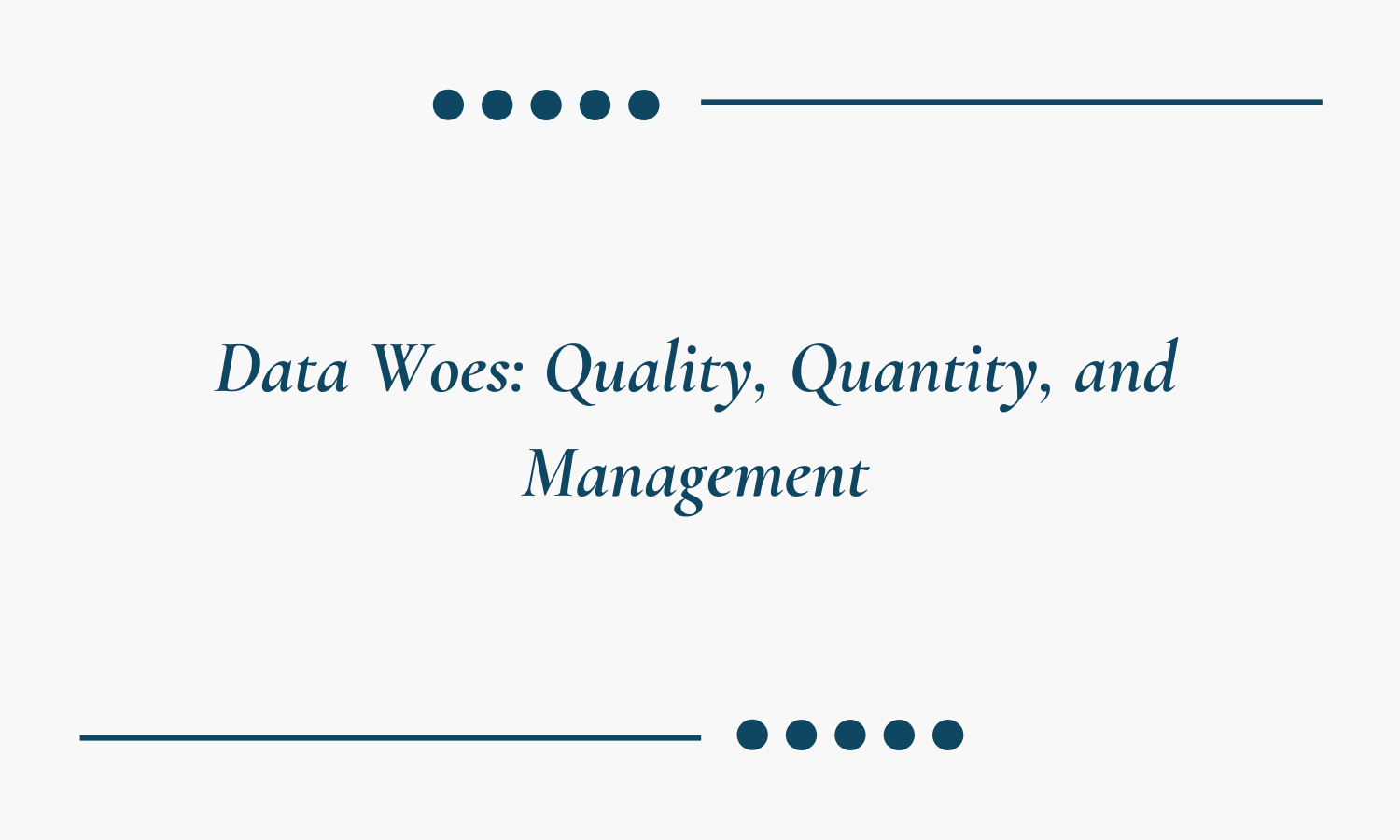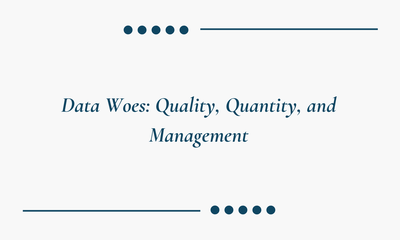Data Woes: Quality, Quantity, and Management
By tung.nguyenthanh, at: Aug. 18, 2025, 10:08 a.m.
Estimated Reading Time: __READING_TIME__ minutes


The Challenge
When it comes to AI, the saying “garbage in, garbage out” is painfully true. Many SMEs and startups find they either don’t have enough data or their data is of poor quality for training AI models (MIT Sloan).
Picture this: a startup in Vietnam wants to use AI for sales predictions but has incomplete customer records, missing transaction data, or logs scattered across spreadsheets and legacy systems. Data formats don’t match, fields are inconsistent, and some records are just plain wrong. The nightmare just starts.
The result? Models that perform poorly, make incorrect predictions, and quickly erode trust in AI’s value (Forbes). And because SMEs rarely have dedicated data engineering teams, data cleaning and labeling become a resource-draining chore.
In other words: data may be (must be - to be exact) the fuel for AI - but most small businesses are running on an empty or messy tank.
The Smart Solutions
Instead of starting from scratch, many SMEs are turning to pre-existing data and pre-trained models to shortcut the heavy lifting:
-
Pre-trained Models & AI APIs: Services from Google Cloud Vision, OpenAI, or Hugging Face let you leverage models trained on massive datasets. You can fine-tune them with your smaller, domain-specific data to get usable results fast.
-
Synthetic Data Generation: Tools like Mostly AI or Gretel.ai create realistic synthetic datasets to augment scarce real data, boosting model training without extra collection costs.
-
Automated Data Labeling: Platforms such as Label Studio and SuperAnnotate use AI to pre-label data, drastically reducing the manual effort required.
Example: Instead of collecting thousands of product photos to train an image recognition model, a small eCommerce business could use Google’s object detection API and fine-tune it with just a few hundred examples of its own products.
Pros & Cons
| Pros | Cons |
|---|---|
| Faster AI Implementation: Skip months of data gathering and jump straight to insights. Example: deploy a sentiment analysis API on customer reviews within days. | Less Domain Specificity: Pre-trained models may not fully understand your industry’s jargon or context without extra tuning. |
| Reduced Data Requirement: Stand on the shoulders of giants who trained models on huge datasets (OpenAI and Google AI). | Data Privacy Concerns: Sending sensitive data to third-party APIs can introduce compliance risks. |
| Improved Accuracy Out-of-the-Box: Large, diverse training sets often give decent results right away. | Dependence and Costs: API providers can change terms or pricing, potentially impacting your solution. |
Tailoring for Startups & SMEs
To balance speed and control, consider this approach:
-
Launch Fast with Pre-trained Models: Use them to roll out features quickly while identifying their limitations for your specific use case.
-
Collect Proprietary Data in Parallel: For example, run a customer support chatbot but log every unanswered or misinterpreted query. Those logs become valuable training data for your own model later.
-
Set Up Basic Data Governance Early: Even simple rules for cleaning, validating, and storing data will pay off when scaling (Gartner).
-
Explore Data Partnerships: Collaborate with non-competing companies in your sector to pool anonymized data for mutual benefit.
Over time, this hybrid strategy turns pre-trained convenience into a long-term competitive advantage, your own high-quality, domain-specific dataset.
Why It Matters
Without quality data, even the best AI architecture will underperform. But with the right mix of borrowed intelligence (pre-trained models) and careful data strategy, SMEs can bypass the early roadblocks and start delivering AI-driven value fast.
And if building that pipeline feels daunting, Glinteco can help. Our AI-powered team specializes in integrating pre-trained models, automating data preparation, and creating scalable solutions tailored to your business so you can focus on outcomes, not infrastructure.




